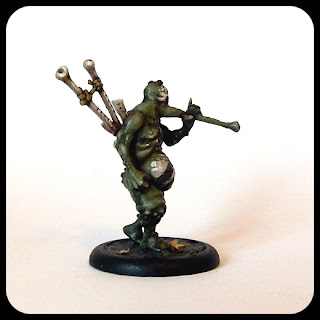Happy holidays, everyone! : )
Now, let me introduce you to my own hand-made pack of cards:
I wanted a custom card pack for the Gardens, based on the Fate Deck used for Malifaux, which is in turn based on the French deck. The first thing you can notice in the picture is that I replaced the Rams, Tomes, Masks and Crows of Malifaux with my own four suits. They are: Blood ( B ), Flesh ( F ), Bone ( O ) and Spirit ( S ). I spent a lot of time thinking about the symbols for the suits, and there were some funky ideas, but in the end I went with the simplest possible solution: spots. Partly because I can be incredibly lazy, partly because I really like the look of it.
So, there are full spots for the solid Flesh and Bone, and empty spots for the more flowing Blood and Spirit. Blood and Flesh should be red, which leaves black for Bone and Spirit. Makes sense.
There are thirteen cards in each suit, each marked with Roman numerals and the number and type of spots corresponding to their suit and value. The only exception is the lowest card, with the value of 1, which is marked with an A. There are no face cards. There is a pair of Jokers, Black and Red, which have no writing on them; just a rectangle of their respectable colour covering most of the card's surface.
 |
| Flesh suit. |
 |
| Bone suit. |
 |
| Blood suit. |
 |
| Spirit suit. |
A little bit about how I made them. First, I cut them all out from A4 sheets of thick white paper, and then stained them with coffee and left to dry. The next step was painting all the spots, for which I used a little trick: a plastic tube. For the empty spots I just dipped the end of the tube into acryllic paint and stamped them on. The full ones demanded a bit more effort: that is filling the outline in. Next came the numbers, written by hand with a ballpoint pen.
That only left the backs of the cards. I didn't want to leave them bare, so I went to a local hobby shop to try and find some nice printed patterned paper to paste on all the backs. I found nothing of use. However, I came across something else: stencils. I picked an arabesque motif. And it was on discount, too. : )
The cards' backs are not all identical (due to coffee staining and little flaws in the stenciled design), but that doesn't bother me since it will not be used in any kind of competitive play.
The cards' backs are not all identical (due to coffee staining and little flaws in the stenciled design), but that doesn't bother me since it will not be used in any kind of competitive play.
 |
| Ace of Flesh, 13 of Spirit, 4 of Bone, 13 of Flesh, 10 of Bone, 9 of Blood, and the Red Joker. |
And I'm going to need another one.
















































